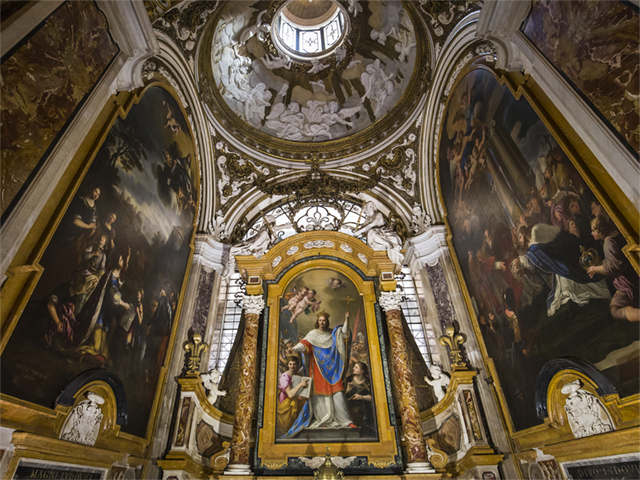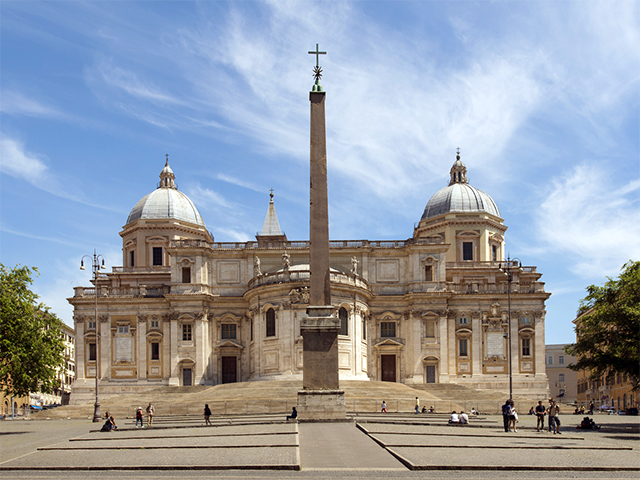Basilica of Sant'Agostino in Campo Marzio
From the Madonna di Loreto by Caravaggio to the Madonna del Parto by Sansovino: visiting hours and what to see in the Basilica of Sant'Agostino in RomePlaced in the square of Sant'Agostino, not far from Piazza Navona, the Basilica of Sant’Agostino in Campo Marzio is one of the first Renaissance Roman churches.
Not everybody knows that the façade of this church, erected between 1479 and 1482 by Giacomo da Pietrasanta and Sebastiano da Firenze, was built using travertine from the Colosseum.
The church houses many priceless works by great artists such as Caravaggio, Raphael and Jacopo Sansovino... follow us!
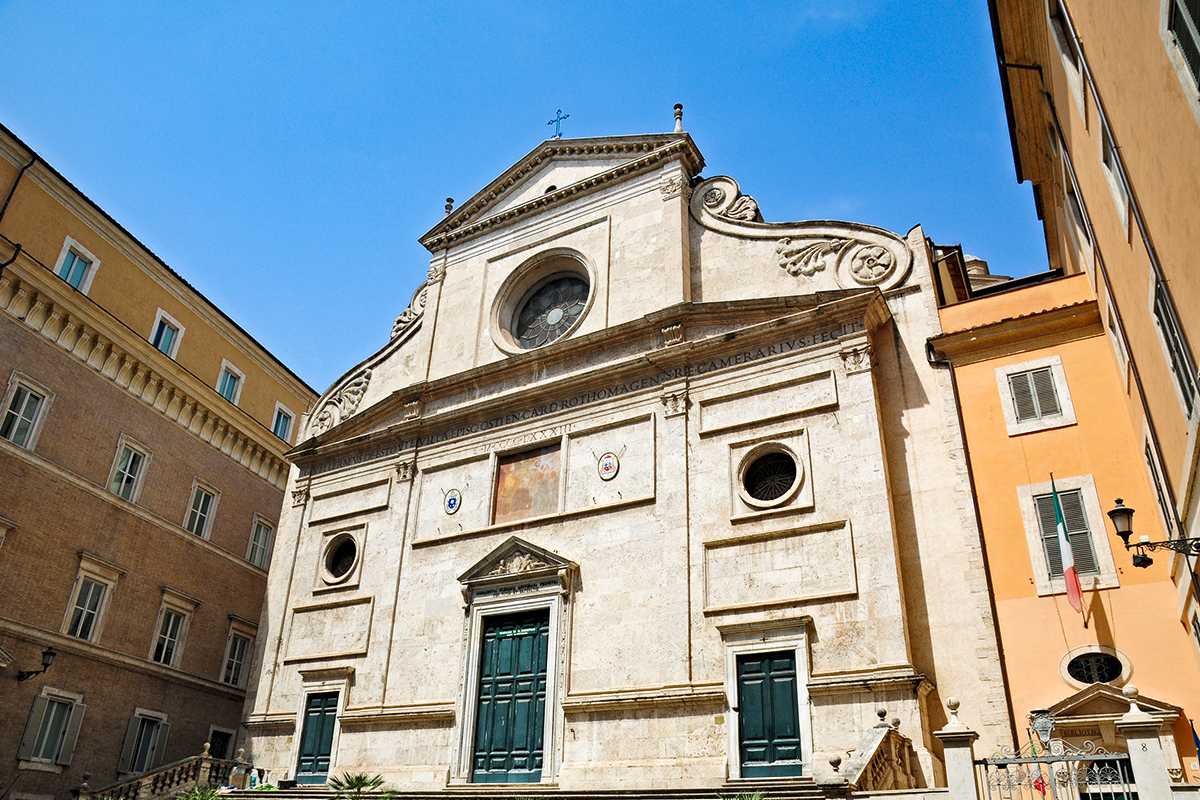
Basilica of Sant'Agostino in Campo Marzio - Rome
A little bit of history
The origins of the church date back to the 14th century, when the Augustinians decided to build a new church devoted to St Augustine to replace the previous Church of San Trifone in Posterula.
Built between the end of the 14th and the beginning of the 15th century, the new church was completed around 1420. However the building was too small for the needs of the Community and subject to the continuous flooding of the Tiber. Thus, Cardinal Guillaume d'Estouteville between 1479 and 1483, financed the construction of a new building, this time definitive.
The Church of Sant'Agostino was elevated by Pope John Paul II to the rank of Minor Basilica in October, 1999.
Art, architecture and main works to see
The current appearance is due to a reconstruction occurred in the years 1479-1483 by Jacopo di Pietrasanta and Sebastiano Fiorentino. In 1756 Luigi Vanvitelli radically transformed the interior of the church and modified the fifteenth-century bell-tower.
The facade, typical example of Roman Renaissance architecture romana, presents in the lower order a large portal with a triangular tympanum. To the sides are two minor portals surmounted by two round windows.
Curious fact: it was the first church in Rome to have a dome. The interior of the church with a Latin Cross plant, is divided into three naves and has five chapels on each side.
Among the main works which you can admire, on the right of the main entrance is located the famous Madonna del Parto by Jacopo Sansovino (1521) which according to popular tradition, would be miraculous.
Legend has it that the statue was made by adapting an ancient effigy that portrays Agrippina holding her son Nero in her arms.
The Roman poet Gioacchino Belli in an irreverent sonnet commented the excessive pomp of jewelry on the statue of the Madonna.
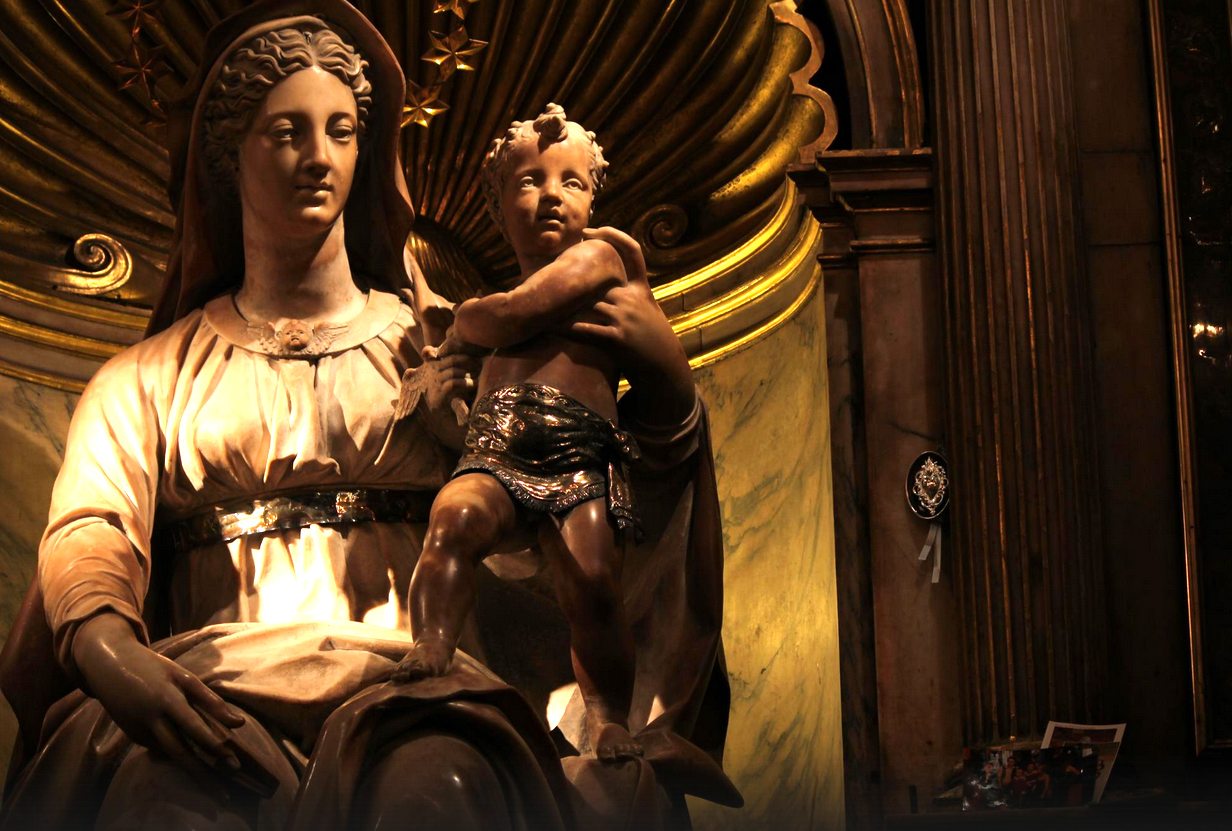
Madonna del Parto by Jacopo Sansovino
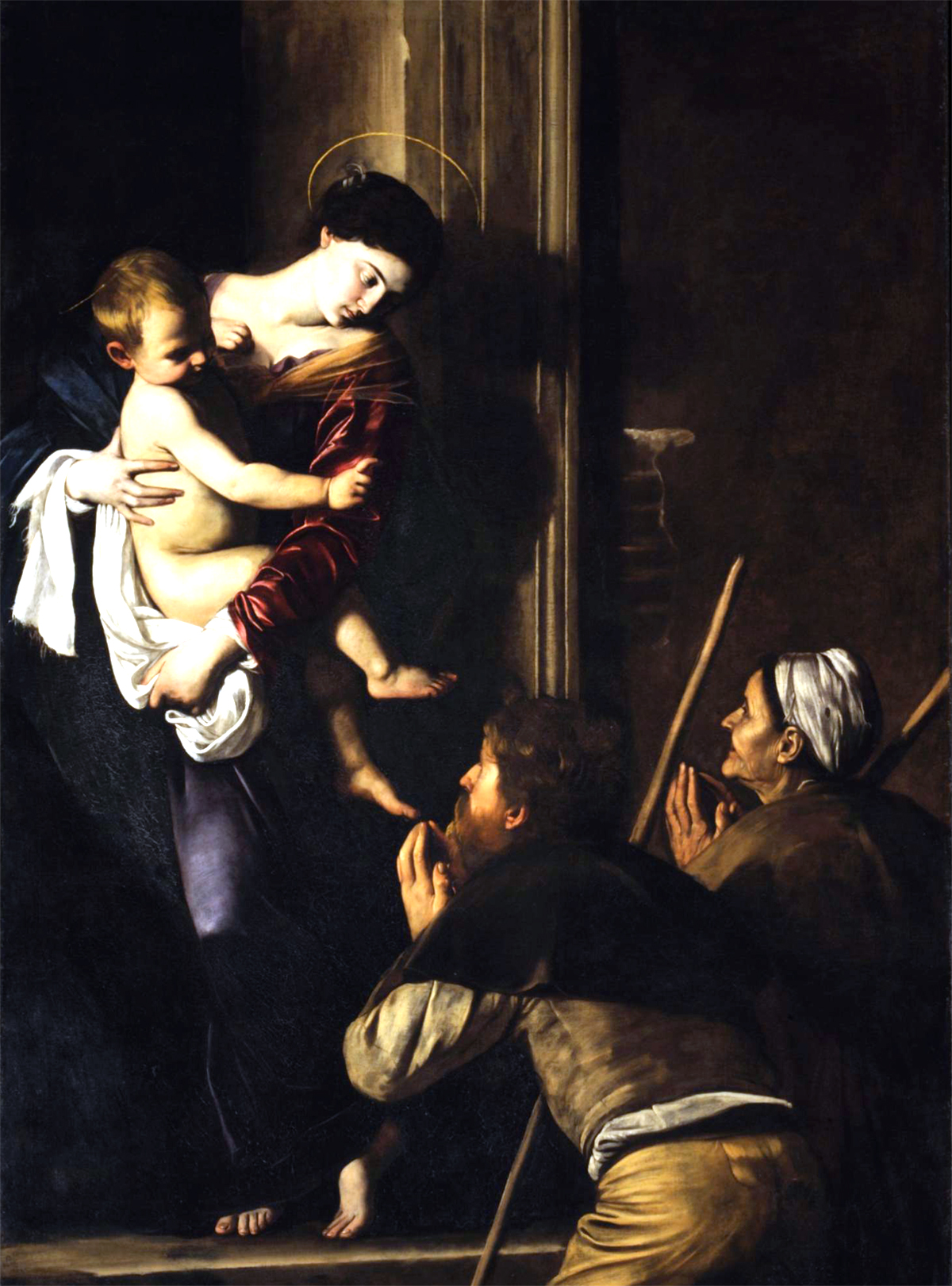
Caravaggio - Madonna di Loreto
Among the most important works is, without any doubts, the Madonna di Loreto by Caravaggio, also known as Madonna dei Pellegrini.
It is one of the most famous paintings by Caravaggio, which the artist donated to the church as a thanking gesture.
It is said that the tormented painter, in order to avoid being murdered by the father of a girl he had seduced, he found shelter in the basilica. According to many, the features of this woman, Lena, would be portrayed in the work to represent the Holy Virgin.
The third pillar to the left of the nave hosts the Prophet Isaiah (1512), an important fresco by Raphael, while on the high altar, made in 1627 by Bernini, is located the Virgin with Child coming from the church of Santa Sophia in Constantinople.
Also not to be missed are the shovel representing Saints Augustine, John the Evangelist and Jerome by Guercino (1591-1666) situated in the chapel of the right transept.
The church houses the tombs of several distinguished deceased including Santa Monica, the mother of Saint'Augustine, the humanist poet Maffeo Vegio from Lodi, Contessina de' Medici, daughter of Lorenzo the Magnificent, Cardinal Girolamo Verallo and Cardinal Egidio from Viterbo.
Curious fact... the Basilica of Sant'Agostino was the only church in Rome that allowed admission to paramours, to whom were reserved the first rows, to guard them against people's looks and avoiding the faithful to be easily distracted!
In the church are the tombs of some of them, like Fiammetta Michaelis, lover of Cesare Borgia or Giulia Campana with her daughters, Penelope and the famous Tullia of Aragon.
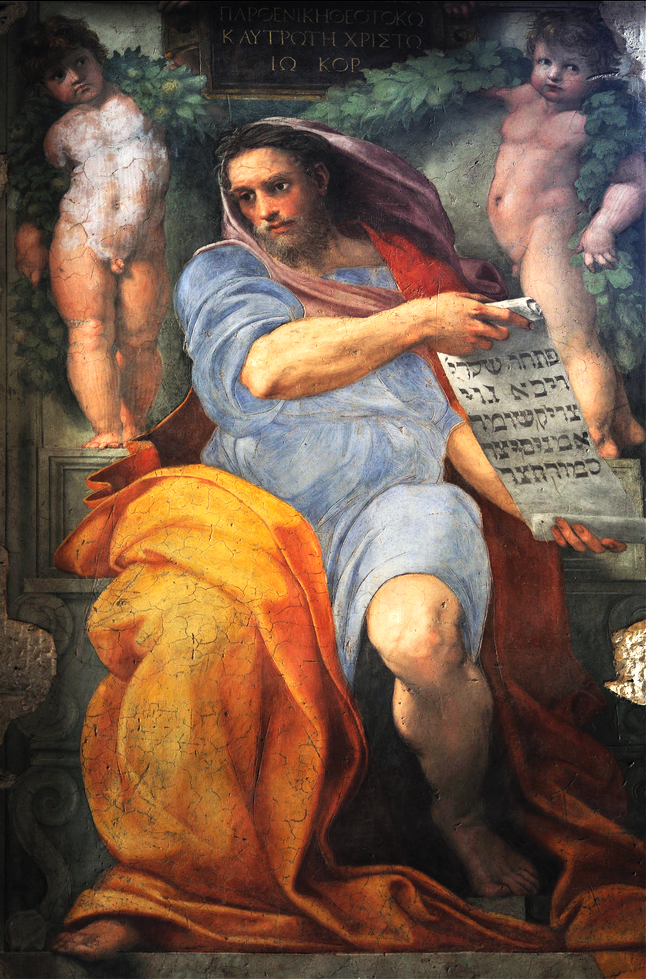
Raphael - Prophet Isaiah

Basilica of Sant'Agostino - Tomb of Saint Monica
For further information on visiting hours and days to visit the Basilica of Sant'Agostino in Campo Marzio we invite you to refer to the information box at the bottom of the article.
Useful information
Basilica of Sant'Agostino in Campo Marzio
- HOW TO GET THERE
From the Port of Civitavecchia: the Basilica of Sant'Agostino in Campo Marzio is in the square with the same name, really close to Piazza Navona. To get there, first go to the Civitavecchia station and get on the first train bound for Rome. After about one hour trip, get off at Roma Termini Station and go towards Piazza dei Cinquecento, the bus terminal.
We recommend to get line 64 - P.ZA STAZIONE S. PIETRO (FL) for 9 stops. Get off at C.SO VITTORIO EMANUELE/S. A. DELLA VALLE in Corso Vittorio Emanuele II. After 500 meters on foot you'll be there.
From Rome: since it is very close to Piazza Navona we recommend any bus line stopping there: 46, 571, 492, 62, 628, 64 (for who is coming from Termini Station), 70, 81, 87, 916 and C3. Regarding night bus lines, you can count with number n15, n20, n5, n6 and n7. We invite you to check the night bus timetables, since they don't run very often.
*For train timetables and routes refer to Trenitalia.*For further information about bus timetables and routes, depending on where you are, you can refer to ATAC.- TIMETABLES
Every day 7:30 - 12:00 | 16:00 - 19:30
Mass Times
Holidays: 8:00 - 10:00 - 12:00 - 18:30
Working days: 8:00 - 18:30
*During the Mass, visiting the church is not allowed- PRICES
Free admission



 PORT MOBILITY CIVITAVECCHIA
PORT MOBILITY CIVITAVECCHIA








